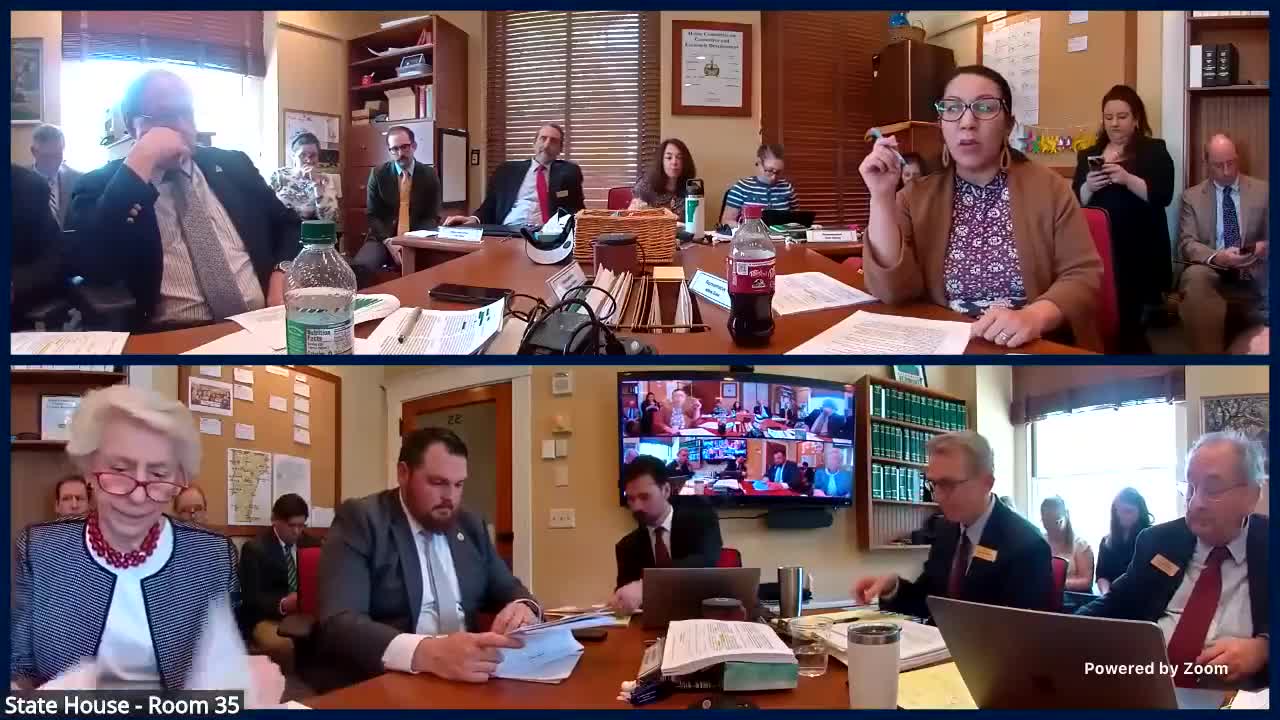Municipality debates housing policy while prioritizing public infrastructure funding
May 30, 2025 | General & Housing, HOUSE OF REPRESENTATIVES, Committees, Legislative , Vermont
This article was created by AI summarizing key points discussed. AI makes mistakes, so for full details and context, please refer to the video of the full meeting. Please report any errors so we can fix them. Report an error »

Infrastructure took center stage at the recent S.127 Committee of Conference meeting in Vermont, with officials emphasizing its critical role in community development. The discussion highlighted the need for infrastructure to serve as a public good, extending beyond mere housing projects. One participant pointed out that infrastructure not only cleans water but also fosters growth opportunities for businesses and future housing developments.
A significant point of contention arose regarding the eligibility criteria for infrastructure funding. Concerns were raised about a recent change that limited the size of eligible parcels, which some argued was unnecessary. The committee debated whether the funding should be restricted to the footprint of development sites or if it could also benefit surrounding properties that would utilize the infrastructure.
Housing policy was another hot topic, particularly the definition of a "bonafide domicile." The committee expressed confusion over language that seemed to discourage short-term rentals, with members advocating for a focus on creating housing that remains available for full-time residents. The conversation included proposals for deed restrictions to ensure properties are not used as second homes or short-term rentals, raising questions about how municipalities could effectively enforce such regulations.
The meeting also touched on the importance of quantifying the "but for" test related to tax increment financing (TIF), with members acknowledging the need for clearer metrics to assess the value of proposed developments. Additionally, discussions around floor area requirements revealed a consensus that such measures might not accurately reflect good housing policy, as they could allow for large luxury units at the expense of affordable housing.
As the committee continues to refine its proposals, the focus remains on ensuring that infrastructure investments lead to meaningful housing solutions that prioritize community needs. The next steps will involve further discussions to clarify definitions and metrics, aiming to strike a balance between development and the preservation of public good.
A significant point of contention arose regarding the eligibility criteria for infrastructure funding. Concerns were raised about a recent change that limited the size of eligible parcels, which some argued was unnecessary. The committee debated whether the funding should be restricted to the footprint of development sites or if it could also benefit surrounding properties that would utilize the infrastructure.
Housing policy was another hot topic, particularly the definition of a "bonafide domicile." The committee expressed confusion over language that seemed to discourage short-term rentals, with members advocating for a focus on creating housing that remains available for full-time residents. The conversation included proposals for deed restrictions to ensure properties are not used as second homes or short-term rentals, raising questions about how municipalities could effectively enforce such regulations.
The meeting also touched on the importance of quantifying the "but for" test related to tax increment financing (TIF), with members acknowledging the need for clearer metrics to assess the value of proposed developments. Additionally, discussions around floor area requirements revealed a consensus that such measures might not accurately reflect good housing policy, as they could allow for large luxury units at the expense of affordable housing.
As the committee continues to refine its proposals, the focus remains on ensuring that infrastructure investments lead to meaningful housing solutions that prioritize community needs. The next steps will involve further discussions to clarify definitions and metrics, aiming to strike a balance between development and the preservation of public good.
View full meeting
This article is based on a recent meeting—watch the full video and explore the complete transcript for deeper insights into the discussion.
View full meeting